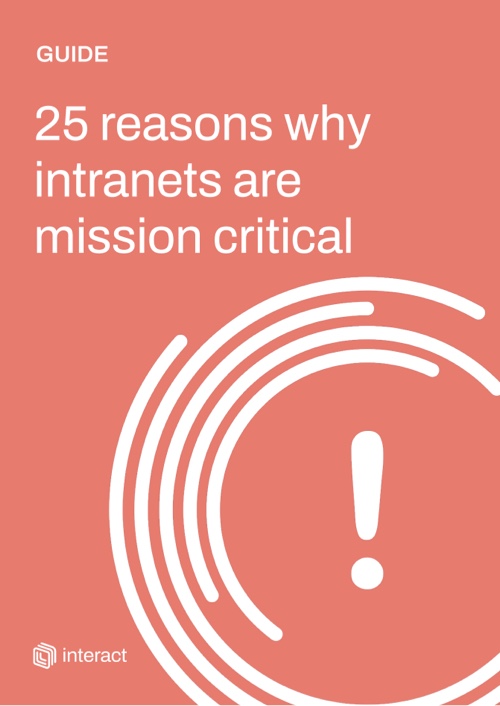First impressions count, especially during the employee onboarding process. When selecting an onboarding solution for your business, it is crucial to ensure that you address all the necessary aspects. This article explores nine key considerations to help you optimize the employee onboarding experience.
Setting up new hires for long-term success should be a leading priority for every organization. However, despite the importance of the employee onboarding experience, many organizations still struggle to deliver exceptional experiences for new hires.
New starters come with high expectations and if the employee experience doesn’t match those expectations from the outset, they may choose to walk away.
Getting them orientated, embedded, comfortable, and productive as efficiently as possible is important to both the employer and the new hire; both parties want this to work, so how can you make sure it does?
Only 12% of employees think their employer does a great job onboarding new staff.
(Gallup)
With the ever-advancing potential of the digital workplace, employee onboarding solutions are an increasingly popular way to manage the processes, workflows, and experience for new hires. Given the level of choice and investment, it’s important our chosen employee onboarding solution ticks all the relevant boxes and delivers a demonstrable return and value to both business and employee.
So, where do you start?
23 ways your workplace can use a mission-critical intranet to achieve its objectives
How technology supports the employee onboarding experience
If the top priorities for the employee onboarding experience are completing forms, undergoing training, or holding one-to-ones with line managers, where’s the demand for technology in the process?
Implementation of formal onboarding processes may be growing, but onboarding software adoption continues to lag. However, rolling out a dedicated employee onboarding tool offers a range of benefits that extend further than most of us realize. These include:
- Streamlining and simplifying processes
- Standardizing onboarding approaches across the organization
- Reducing the HR and administrative burden, by empowering new staff to self-serve
- Fast-tracking productivity with centralized and easy access to peers, information and content
- Facilitating e-learning, training and onboarding sessions that are flexible to the device, location, and needs of the individual
- Enabling new hires to tap into the digital workplace and understand the culture, company values, and mission of their new organization
- While the administrative side is often a priority, it’s not the full picture. This is where onboarding software can play a powerful role.
While the administrative side is often a priority, it’s not the full picture. This is where onboarding software can play a powerful role.
What do you need to consider when choosing an employee onboarding solution?
The practices and processes involved in the employee onboarding experience will be unique to each organization, department, and even each individual employee. It is crucial that before selecting a platform or solution each organization determines its own needs, weaknesses, gaps or priorities.
Speaking directly with employees who have recently experienced or are undergoing the onboarding process can provide valuable insight and direction. Line managers, responsible for the hands-on process of onboarding, can provide departmental experiences and highlight their own needs.
Ultimately, solutions must answer to core requirements of traditional onboarding, but also offer flexibility to be tailored according to individual needs.
So, what do you need to consider in the employee onboarding experience?
23 ways your workplace can use a mission-critical intranet to achieve its objectives
#1. Mobile, remote, frontline, and dispersed employees
Today’s organizations are continuing to see a ‘decentralization’ in how they operate. Trends including flexible and remote working, the gig economy, globalization and ‘office-less’ workplaces present a unique challenge for the employee onboarding.
While many organizations will choose to bring staff in-house for an initial week or more, onboarding is – or should! – be a much longer-term process than this.
An onboarding solution that is accessible, cloud-based and mobile-ready or offers an employee onboarding app is crucial to tap into this demographic of worker, who are the most likely to become disengaged or leave a business.
#2. Pre-boarding
Too many newly recruited employees are left in a silent limbo during the period from offer letter to first day.
This is arguably one of the most vulnerable periods during the recruitment and onboarding cycle; counteroffers may be extended, interest wanes, uncertainties set in. Without the momentum of being in the hub of the new organization, how do you retain enthusiasm and interest in our new staff?
40% of staff turnover happens within the first month.
(Equifax Workforce Solutions)
An onboarding solution that offers a pre-boarding experience – perhaps through temporary login details and permission-led restrictions on content, or tailored homepages that present the relevant information to build and maintain interest – may be the answer. If your organization sees high first-month turnover or failure-to-start numbers, place this functionality on your wishlist.
#3. The wider digital workplace
Today’s workplaces utilize a vast array of digital tools; the average enterprise has 500 different applications in use, spanning productivity tools, cloud storage, email, project or task management, communication tools, and more.
Adding additional tools to an already complex digital workplace requires careful management. Where will your onboarding solution fit alongside existing platforms? Are there certain tools that need to integrate and work seamlessly with it; for example, your HR software, payroll, or performance management platform? Can it answer challenges that aren’t currently being resolved with existing tools?
It’s important to have a clear strategy that lays out the boundaries and use cases for your different platforms, alongside their ability to work together; especially if there is overlap in terms of functionality or purpose. Check integration functionality if this one ranks on your priority list.
23 ways your workplace can use a mission-critical intranet to achieve its objectives
#4. Password management
The average email address is associated with 130 or more accounts that require passwords (Digital Guardian) and as a result – despite increased awareness of the risks involved – many individuals continue to use weak or reused passwords, creating considerable cybersecurity risk for organizations.
Reducing both the volume of passwords required and the administrative burden on IT in managing those is a business priority; given that the majority of accounts are created during the onboarding period, this needs to be on your radar.
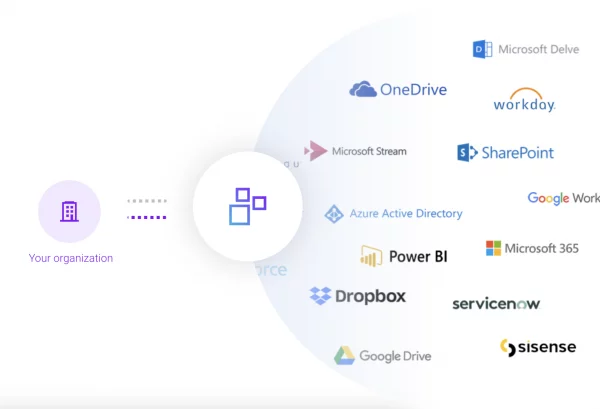
When looking for an onboarding solution, consider those with the capacity for single sign-on (SSO). This enables employees to use the platform to log into multiple other tools and software within your organization, with just one login. This can reduce volume of passwords required and, in turn, vulnerability or risk to the business.
#5. People are more than a job title
The traditional staff directory and organization chart is increasingly redundant and of limited use for new starters. Organizations are also becoming agile in how they operate.
According to Gartner, the future of work will see the dissolution of departments as we know them today, with a shift towards “the Uber model of working”, where individuals are brought into a project based on their skill and experience, rather than residing in rigidly-defined departments.
For this reason, the ability to search by skillset, expertise, experience, or interest is arguably of greater value than the traditional name and department alone.
Company culture is also one of the most critical components of employee engagement. By connecting new starters with their colleagues as peers and individuals, rather than faceless job titles, we can help instill connections and a sense of belonging from day one. Technology can facilitate this through virtual water coolers where employees can learn more about one another, chat, share, and feel a part of the organization.
When looking for an onboarding solution, rich profiles that extend past core contact details and social tools that enable staff to connect beyond their roles should feature on the wishlist.
#6. An onboarding solution needs to deliver tailored experiences
The employee lifecycle is shaped by changing needs and experiences at each stage of a staff members’ journey through work. We’ve also highlighted that onboarding is typically unique to each individual role or department.
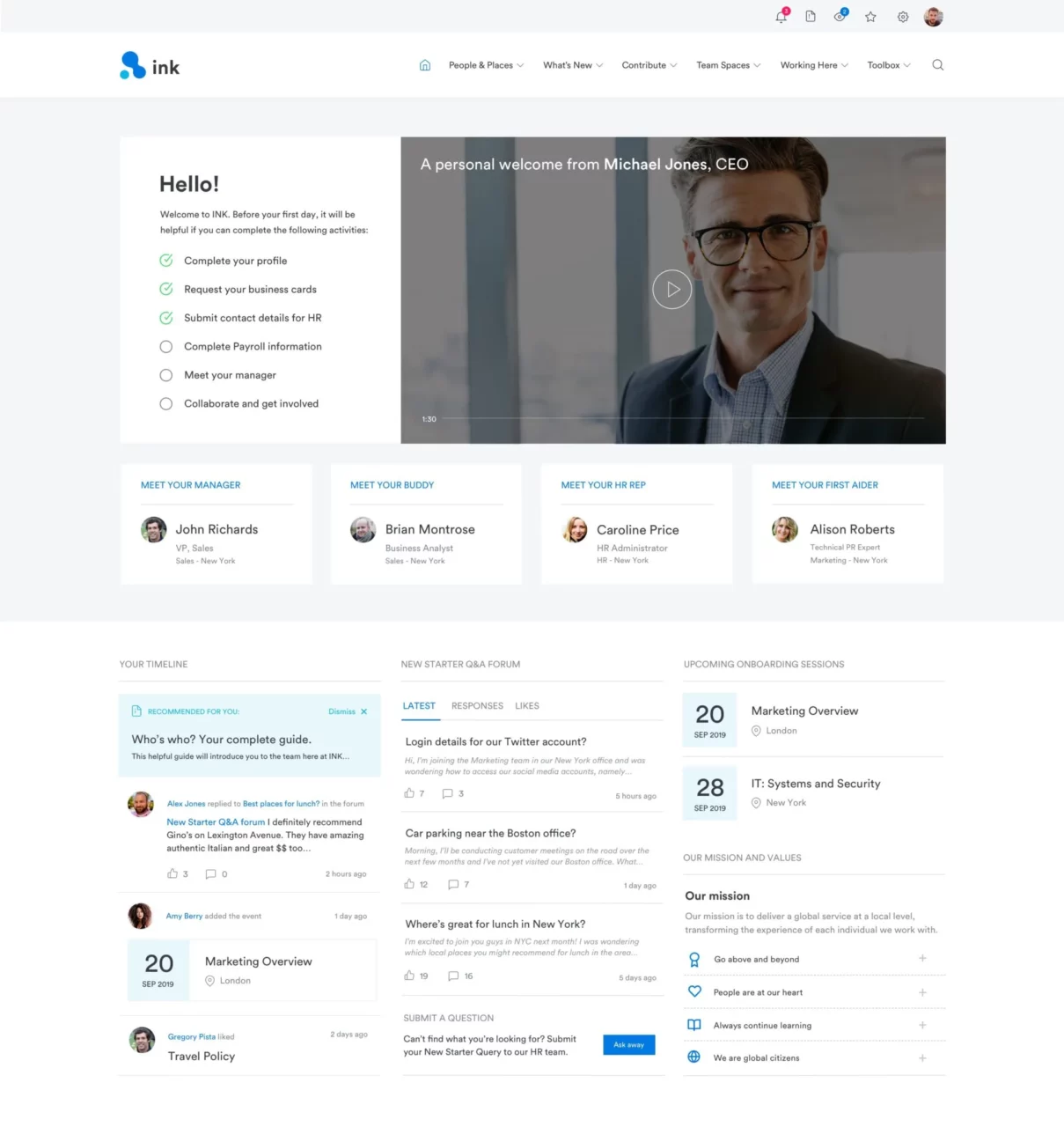
The information presented during onboarding, then, should reflect this need for tailored and personalized experiences. The ability to pull through dynamic content based on persona attributes including job title, seniority level, location, department, training completed and more, all ensure users are receiving relevant and timely information that will keep them engaged throughout the onboarding process.
This all contributes to a more positive experience for the employee, and a reduced burden for the employer.
#7. Workflows and paperwork are a necessary evil
We’ve argued that onboarding shouldn’t be solely focused on the paperwork; it is, however, a business necessity and as such, a need that should be answered by your onboarding solution.
23 ways your workplace can use a mission-critical intranet to achieve its objectives
Consider functionality that can streamline and reduce time-consuming workflows and processes. Digital forms, mandatory read functionality for compliance, digital signatures, and the submission of crucial information including bank or tax details, contact information, references, and more, should all be managed through a centralized employee portal.
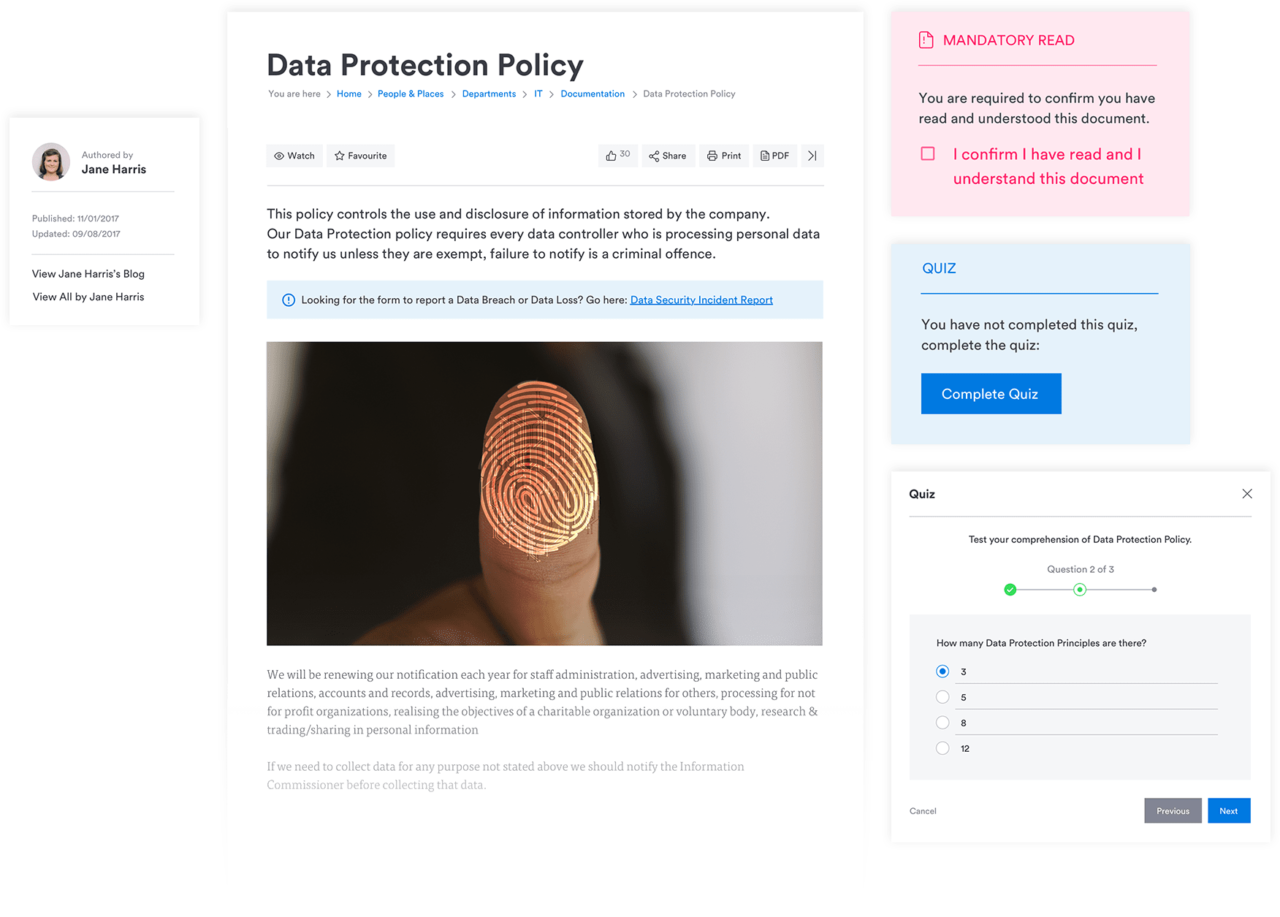
This reduces the burden on both employer and employee while reducing the risk of incomplete information.
#8. Knowledge is company-wide
No matter how comprehensive your employee handbook may be, it can’t hold all the answers to every potential question new starters bring to the table.
What’s more, the majority of knowledge isn’t held in policies, documentation, or filed away in your company DMS. It’s held by people.
An onboarding solution should enable users to tap into the different pools of knowledge residing within your organization. This may include, for example, enterprise search that can intelligently pull results from across a multitude of different sources; question and answer forums that are included in the search; or the nomination of named experts to answer questions based on their skills or experience.
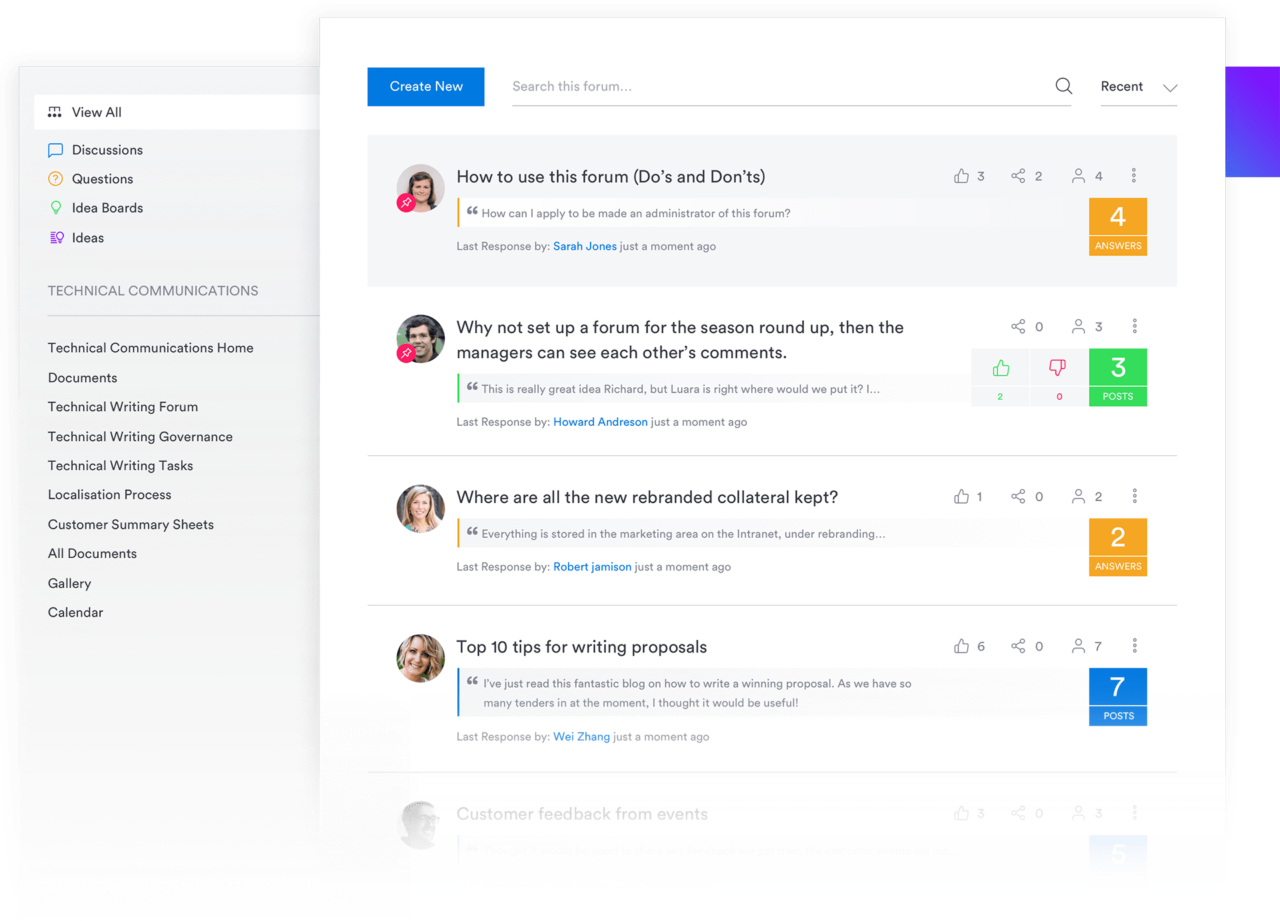
During onboarding, staff should be able to appeal to their peers regardless of location or role; breaking down many of the traditional barriers in place within the organization.
Best of all, digitalized capture of that knowledge is retained for future reference; even after the nominated experts are no longer with the business.
#9. Onboarding is a period of information-overload
The initial period of employment is typically a period of intense learning. Even those bringing a wealth of experience to a role will need to understand the culture and processes of the new organization.
Retaining that information is a challenge. An onboarding solution with a centralized content management system (CMS) or e-learning functionality can empower staff to revisit training materials, undertake modules or training at their own pace, and self-serve in their early development. This is also a crucial way to upskill remote employees.
Multi-media uploads – for example, PowerPoint and PDF files, videos, and images – are an important piece of this puzzle; functionality including quizzing/testing, analytics for tracking progress, question/answer forums, and more, all need to be considered here.
Onboarding solutions are part of a broader onboarding strategy.
A digital onboarding solution can support a considered onboarding strategy that looks to the entire employee experience: it can’t replace, for example, a face-to-face conversation with a line manager, or one of the many creative ideas to welcome new employees. It is important to bear this in mind; purchasing and switching on a tool is not a silver bullet.
However, with a considered approach and strategy, it can address a variety of common challenges raised during onboarding. While the wishlist of features and functionality will vary from one organization to the next, many of today’s digital workplace solutions and intranets are designed to deliver an outstanding experience at every stage of the employee lifecycle – not just the first few weeks.
The process of advertising and recruiting can be costly, time-consuming, and highly competitive in today’s market; amounting to an average of $4000 and 24 days for every hire. Delivering the optimal experience for new starters is not simply an HR duty of care; it is a business priority to protect our investment, employer reputation, culture, and more.
Is it time you invested?
